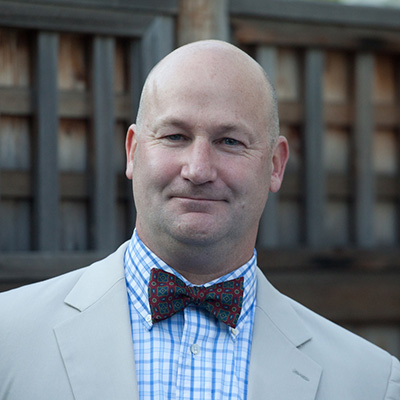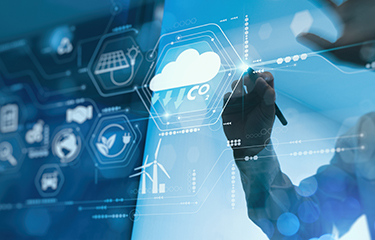The relationship between seafood and climate change is complex.
Many aspects of seafood’s production and management are vulnerable to the negative impacts of climate change and, at the same time, seafood or blue foods are increasingly recognized as a critical element for more climate-friendly global food systems – food production is a key driver for climate change, with estimates as high as 30 percent of total greenhouse gas emissions. Protecting seafood resources; understanding impacts and designing appropriate responses; addressing outside drivers impacting seafood; and advocating for seafood as an important tool in the fight against climate change all require an integrated strategy and coordinated response to position seafood as the healthy, climate-friendly protein of the future.
As seafood companies try to understand the business implications of climate impacts on their supply chains and how to best respond, here is a quick introduction to four strategies essential to protecting the seafood industry and the planet:
- Reduce the seafood industry’s contribution to climate change
- Make the seafood industry and seafood resources more resilient to climate change
- Promote seafood and blue foods’ contribution to more climate-friendly global food systems
- Increase the seafood industry’s voice in global climate policy
Reducing the seafood industry's contribution to climate change
Seafood is already one of the most climate-friendly proteins available and companies that supply it continue to find new ways to reduce their impact on the environment. Firms are adopting existing climate-friendly practices – such as adding solar power or improving the efficiency of cold-chain operations – while also developing seafood-specific climate innovation, including artificial intelligence for efficient trip planning or the use of electric boats in certain fisheries, as well as awarding grants and prizes to get more seafood companies engaged in the fight against climate change.
These efforts show leadership from companies in the seafood industry and highlight the sector’s interest in doing its part to address climate change. These types of efforts also provide a direct return on investment to companies through increased efficiency and reduced energy costs. Supply-chains are the focus of most sustainability tools – certification, audits, pledges and commitments, even the United Nations’ Sustainable Development Goals – which all evaluate improvement of internal practices as a measure of success. A company’s own supply chain is the right place to start to address climate change, but the work shouldn’t stop there. The main drivers for climate change, and the uncertainty it brings to the industry and seafood-dependent communities, lie beyond seafood supply chains.
The industry and its partners need to continue efforts to reduce seafood’s contribution to climate change, but the sector also needs to get more selfish when addressing the conundrum at hand. The industry needs to advocate for governments to invest in climate-resilient fisheries, and it needs to promote the importance of seafood in a diet that is healthier for people and the planet. Moreover, the sector needs to have its voice heard in international policy development around climate.
This is not about the politics of climate change. Policy is being developed now in response to climate change with or without the engagement of the seafood industry, and resources are being deployed to address the economic impacts of climate change in very much the same manner. Additionally, solutions and innovation are being designed that may or may not account for seafood’s positive contribution to more sustainable food systems, and harmful climate practices continue outside of the seafood industry that threaten the health of oceans and the long-term assured supply of seafood.
For the industry to engage more on climate issues requires the development of new models and approaches to increase the industry’s voice in multinational and global policy development. The good news is models are already being developed in seafood to support industry efforts to be more impactful in the policy arena.
Making the industry and seafood resources more climate resilient
Understanding the impact of a changing climate on fisheries is a complicated endeavor, but a better scientific understanding of the potential effects on fisheries in different regions is currently being built. The industry is also beginning to understand what climate-resilient fisheries look like. Environmental Defense Fund (EDF) Lead Senior Scientist Kristin Kleisner has been working on a starting point for the application of climate resilience concepts to the social-ecological systems associated with fisheries. EDF recently launched a Climate Resilient Fisheries Tool Kit to support fishers and communities in their work towards climate-resilient fisheries.
As the industry and its partners like EDF prepare for potential future impacts on stocks and communities, the North Atlantic Pelagic Advocacy Group (NAPA) is already responding to the inability of fisheries management and policy to adapt to shifting stocks, and serves as a model for industry engagement in policy.
“From 2006, the Northeast Atlantic mackerel stock expanded its summer feeding migration west- and northwards. It has been proposed that the increasing availability of mackerel in the waters of Iceland and the Faroe Islands, drove these coastal states to increase their catches. Iceland increased their national annual quota from 363 [metric tons (MT)] in 2005 to 112,353 [MT] in 2008, and the Faroe Islands increased theirs from 9,770 in 2005 to 122,985 [MT] in 2011,” NAPA Project Lead Tom Pickerell said.
The shift in stocks and increased national annual quotas have triggered a breakdown in management that is impacting the market, Pickerell said.
“Between 2000 and 2009, the coastal states were able to agree on an overall [total allowable catches (TAC)] allocation that adhered to the scientific advice. Since 2009, there has been no such agreement – the TAC has exceeded the scientific advice; the coastal states are overfishing. As a result of this, the valuable Marine Stewardship Council certification was finally suspended from the four mackerel fisheries in the Northeast Atlantic in 2019,” Pickerell noted.
Building climate-resilient fisheries requires more than just developing science and research – it also requires fishers and communities to understand how best to respond to what the science and research is telling them, and requires redesigning management to adapt to changing stocks and other climate impacts.
Promoting seafood and blue foods’ contribution to more climate-friendly global food systems
Tim Fitzgerald, the chief sustainability officer for American Seafoods, will be speaking on a panel titled “Claiming a Place at the Table for Sustainable Seafood as Food Production Takes Center Stage in the Climate Crisis” at SENA 2023, which will highlight the Aquatic Blue Food Coalition and the need for greater industry engagement in food system and climate policy. Fitzgerald wants to make sure the industry does not miss this critical opportunity.
How to increase the seafood industry’s voice in the global policy arena is an issue Seafood2030 will be looking at over the next year. The problem of ocean plastics tracks very closely with climate change and seafood – there are certain things the industry currently does and can do to address its contribution to ocean plastics, such as acting on ghost gear. But the vast majority of ocean plastics comes from outside the industry and, thus, to address those sources of ocean pollution, seafood stakeholders need to develop new ways to positively make an overarching difference.
As EDF’s Kleisner points out, the key to success for the industry will be working on all aspects of the climate challenge.
“We are continuing to learn more about how climate change is impacting fish stocks and we are gaining insights into the elements of climate resilient fisheries and the types of interventions that we might deploy to improve the nimbleness and effectiveness of fisheries management. We need to complement these findings with information from the industry. In particular, this sector also needs to have its voice heard in global policy discussions to advocate for blue foods and their positive impact on global food systems. This will help to address the drivers of climate change outside of the seafood industry that are having negative impacts on people and nature,” Kleisner said.
Photo courtesy of Shutterstock/everything possible







